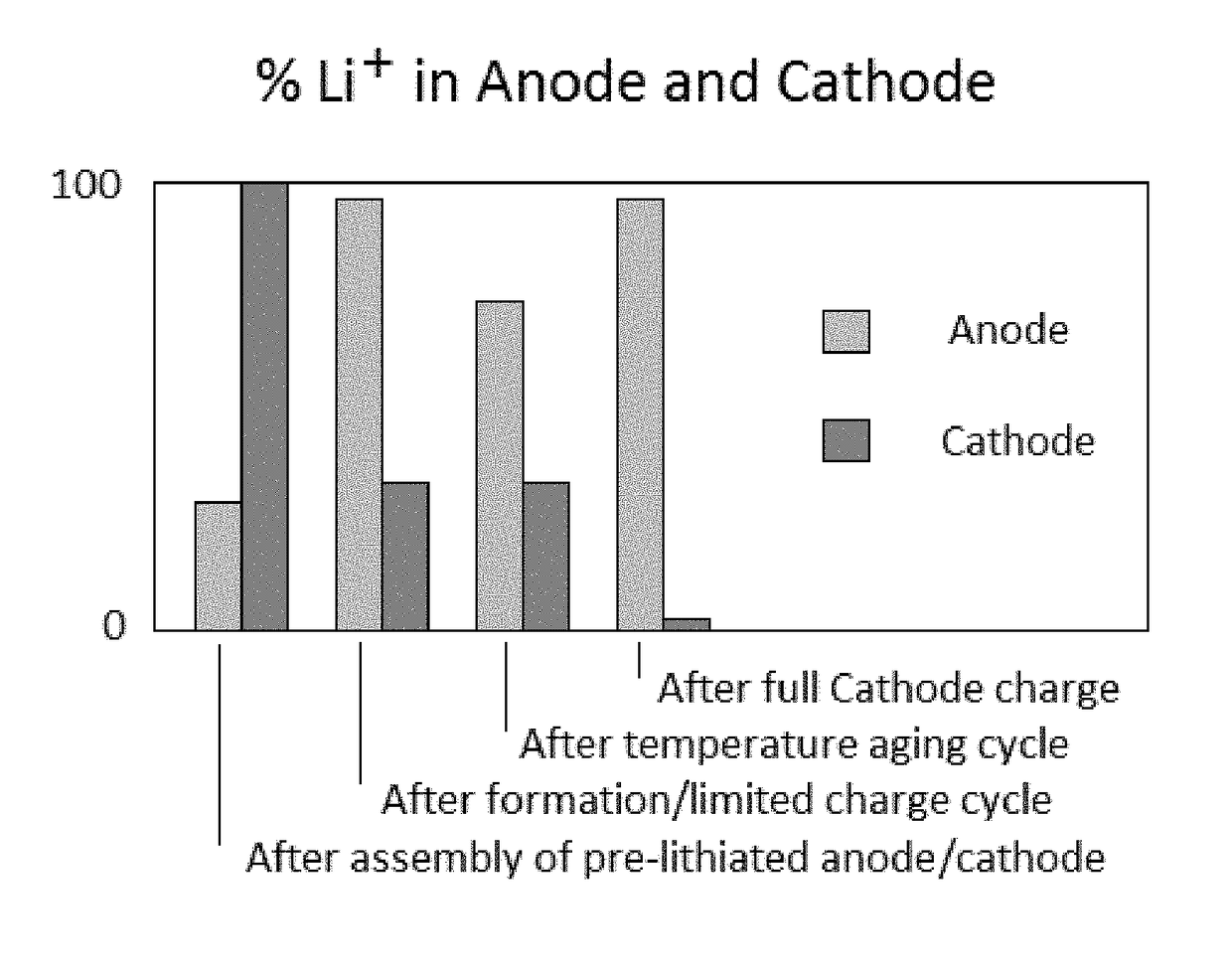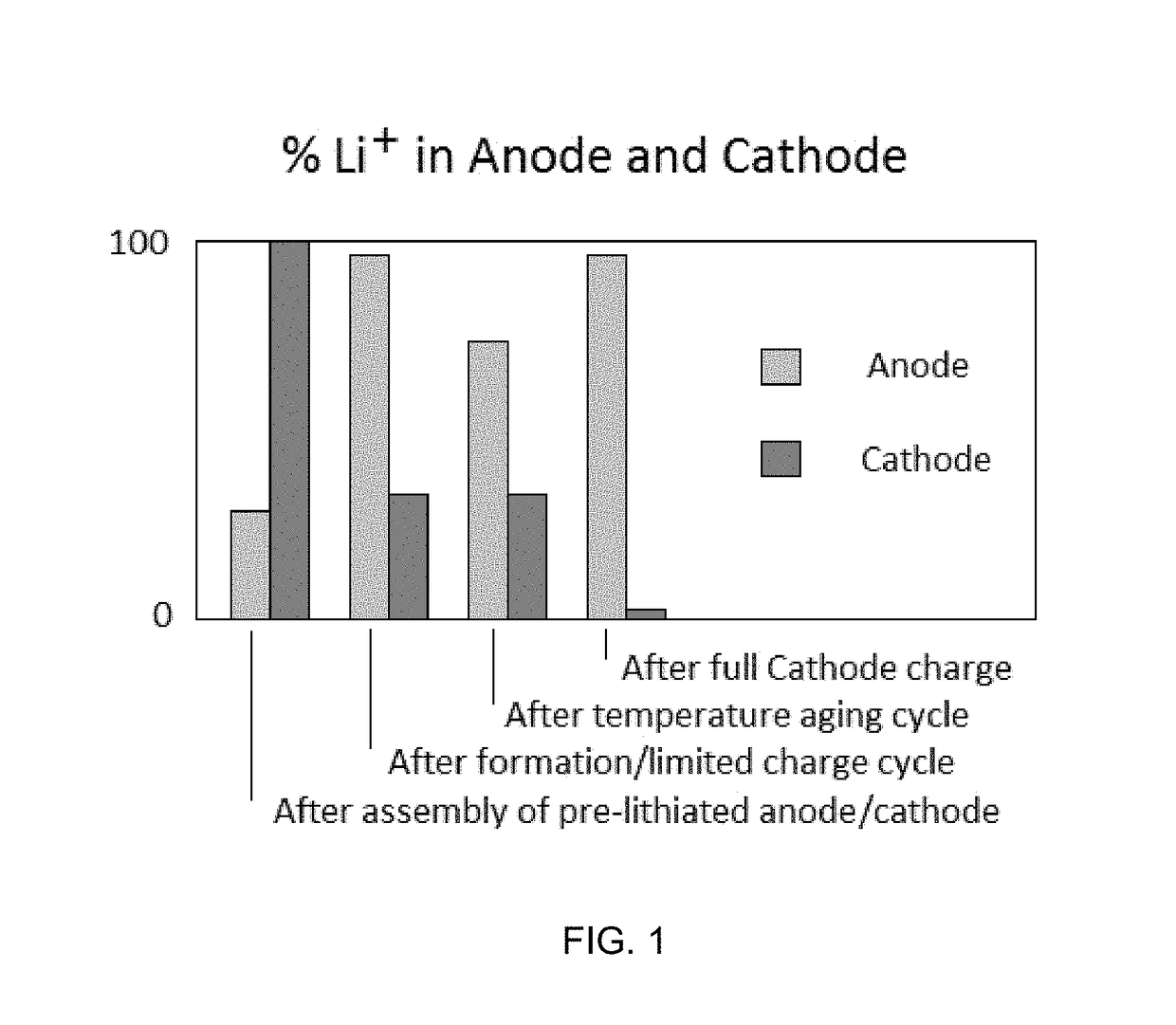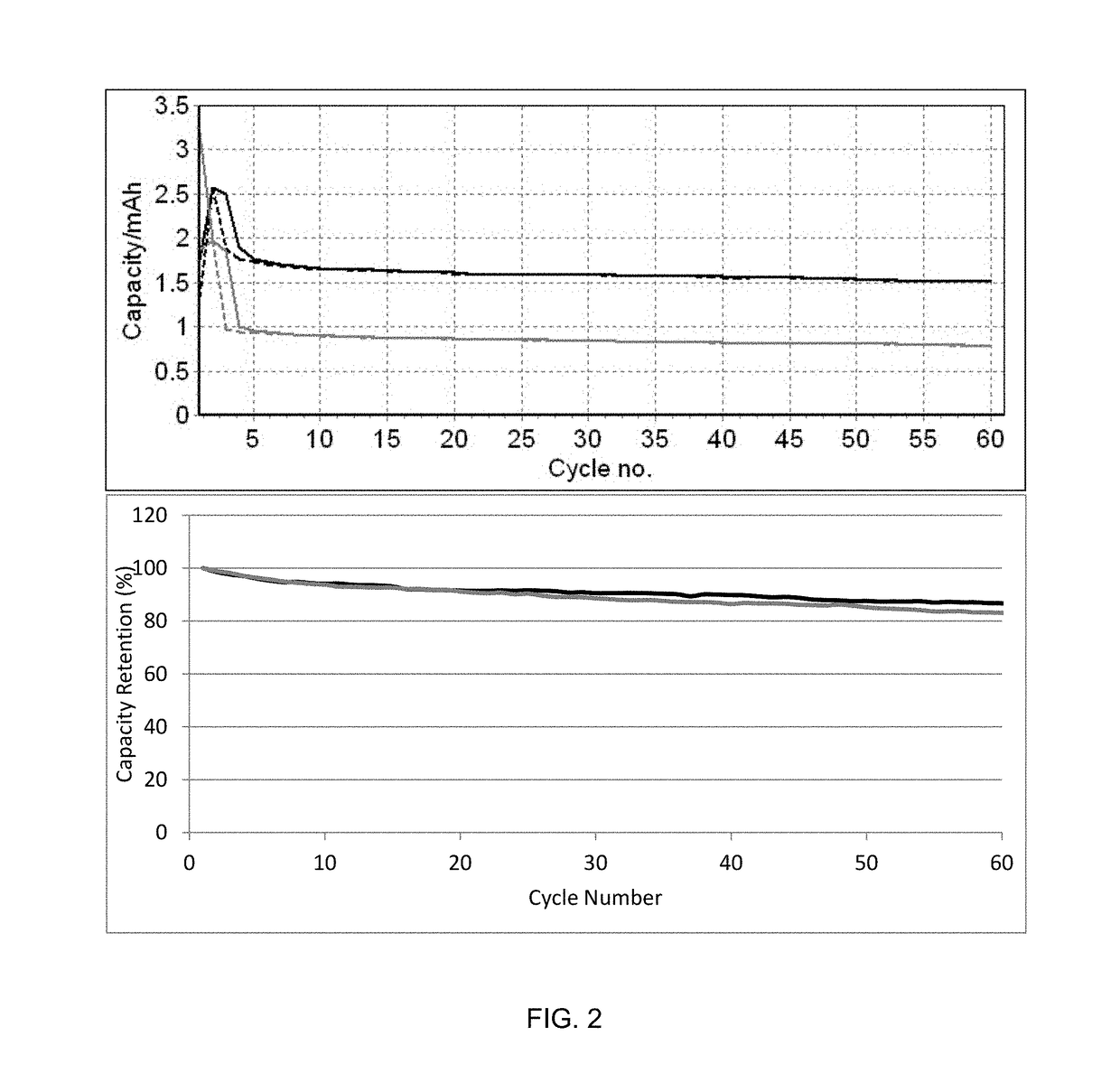Phased introduction of lithium into the pre-lithiated anode of a lithium ion electrochemical cell
a technology of electrochemical cells and lithium ions, applied in secondary cells, cell components, sustainable manufacturing/processing, etc., can solve the problems of large amount of lithium lost, increased losses can continue to occur, and ongoing losses are often significan
- Summary
- Abstract
- Description
- Claims
- Application Information
AI Technical Summary
Benefits of technology
Problems solved by technology
Method used
Image
Examples
example
[0045]The following is a detailed example of an anode preparation and processing. 25 micron thick copper foil was cleaned with isopropyl alcohol and Kimberly-Clark Kimwipes to remove oil and debris and then dried in air. A solution was prepared by adding 2.1 grams of 1,000,000 weight PVDF powder from Arkema Fluoropolymers Div. to 95 ml of dry NMP solvent from Aldrich Chemical. The solution was mixed with a stir bar overnight to fully dissolve the PVDF material. The solution was kept in the dark to prevent the light sensitive solvent from reacting. 33.9 ml of this PVDF solution was then added to 15 grams of Conoco Philips CPreme G5 graphite and 0.33 grams of acetylene black and stirred for 2 hours in a ball mill at 600 RPM with a single ⅜″ diameter stainless steel ball. The resulting slurry was cast onto the copper foil using a vacuum hold down plate with heating capability. The finished graphite thickness after casting and drying at 120° C. was about 100 microns or 14 mg / cm2. The an...
PUM
| Property | Measurement | Unit |
|---|---|---|
| elevated temperature | aaaaa | aaaaa |
| current density | aaaaa | aaaaa |
| temperature | aaaaa | aaaaa |
Abstract
Description
Claims
Application Information
 Login to View More
Login to View More - R&D
- Intellectual Property
- Life Sciences
- Materials
- Tech Scout
- Unparalleled Data Quality
- Higher Quality Content
- 60% Fewer Hallucinations
Browse by: Latest US Patents, China's latest patents, Technical Efficacy Thesaurus, Application Domain, Technology Topic, Popular Technical Reports.
© 2025 PatSnap. All rights reserved.Legal|Privacy policy|Modern Slavery Act Transparency Statement|Sitemap|About US| Contact US: help@patsnap.com



